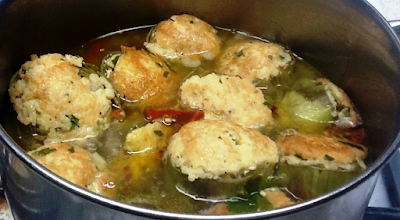I love baby artichokes because with just a little trimming you can eat the whole thing. Unlike fully mature artichokes, baby artichokes haven’t developed the fuzzy portion of the choke in the center. Baby artichokes are a seasonal size and availability does vary throughout the year, but the month of May is the peak volume month for this size artichoke.
9 or 10 baby artichokes
1/2 cup olive oil + 2 tablespoons for sauteing artichokes
2 cups of water
2 cloves of garlic, sliced
Sprig of parsley
1 teaspoon hot pepper flakes (optional)
1 tablespoon red pepper conserve or tomato paste
Stuffing
2 cups day-old bread crumbs
2 eggs, slightly beaten
1/2 cup Parmigiano Reggiano or Pecorino
1 tablespoon chopped parsley
2 cloves chopped garlic
1/2 teaspoon black pepper
Start by rinsing and brushing off the baby artichokes under cold water.
Then, snap off the outer layer of petals of the baby artichoke until you reach the pale, yellow-green layer of petals. With a sharp kitchen knife, trim off the stem and remove the rest of the dark green stem that can cause a bitter taste if not removed. Cut about one half inch off the top of the baby artichoke. Place artichokes in water with some lemon juice to prevent them from darkening.
Take a small skillet, add 2 tablespoons of olive oil over medium heat. Briefly sauté artichokes face down until the stuffing gets golden, then remove.
In a large pot, add 2 cups of water, 1/2 cup olive oil, 3 cloves of garlic, salt, black pepper, teaspoon of hot pepper flakes (optional), and 1 tablespoon of pepper conserve (alternate tomato paste). Bring ingredients to a boil, add the stuffed artichokes, cover and simmer for 1 1/2 - 2 hours. Taste for tenderness of outer leaves.
Once the outer leaves are tender, ready to eat.






No comments:
Post a Comment